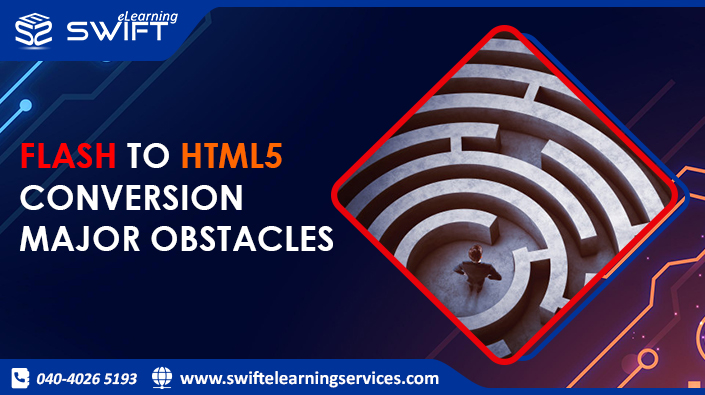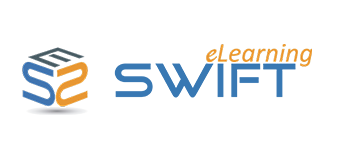Conversion from Flash to HTML5
New eLearning content is, however, well developed afresh, using various rapid eLearning authoring tools. But, the need to convert Flash content into HTML5 comes into the picture, in the context of ‘legacy content conversion’. HTML5 is identified as having flexibility for content design and feasibility for course deployment.
But, in the process of converting the Flash content into HTML5, there are certainly major challenges, which we are going to discuss here:
- Recognizing relevant flash courses to convert into HTML5
- Deteriorated vector graphics quality in HTML5
- Poor functionality of animations in HTML5
Recognizing relevant flash courses to convert into HTML5
Organizations tend to feel that the previously-developed content in Flash is apt and very much useful in many instances. Only changing the mode of delivery – they think – would solve the problem. But, the pitfalls are numerous:
- To go through the Flash courses’ repository and to check each and every file for the feasibility of reusing. Though burdensome, this activity must be performed.
- Some old courses may miss the Flash source files. If the source file is missing, the course needs to be screen-recorded and saved into a video format, which can be played in HTML5.
- Though the course looks apt in terms of storyboarding, it may need re-design to suit the present-day audience and trends. If this is the requirement, then the content must be redesigned.
Deteriorated vector graphics quality in HTML5
The beauty of displaying a vector graphic in Flash was that it wouldn’t get pixelated despite scaling it to a large extent. The vector graphic wouldn’t lose its crispness, thanks to how Flash would render the graphics in Flash Player.
But, the much-impressive graphic quality in Flash would get a setback when graphics are converted into HTML5, raising quality issues. One needs to work manually on those graphics which turned poor in quality in the process of Flash to HTML5 conversion.
Poor functionality of animations in HTML5
The other challenge that we face when we deal with Flash to HTML5 eLearning Conversion is animation lag in HTML5. The users would find the animation lagging in the mobile browsers as character animations and lip sync in voiceover get affected.
This task demands a good number of man-hours as this problem needs to be addressed manually, by working on the animation files.
Conclusion:
Though it is true that Flash to HTML5 conversion would save the productive time for a new course, it is shrewd to note that the time and effort we put into conversion, must not exceed the productive time and should prove itself a worthwhile activity.




